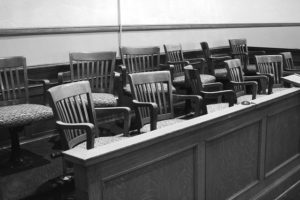Are Your Denials Believable?
When someone says something false or misleading about us—You’re against broccoli—we’re very likely to deny it—No, I’m not! In court, where more than broccoli-hating is involved, attorneys are especially likely to respond with a strong denial, because there is a lot on the line and they don’t want the jury to conclude something is true, because “They never even denied it!” It’s human nature, it’s reasonable, and it’s good trial practice to deny falsehoods. But what makes a denial believable?
Research demonstrates that denials alone are not persuasive. So in trial—where denials are commonplace and persuasion is the primary goal—what gives a denial more traction? Replacing the falsehood with a truth—and specifically, a truth that bears some relation to the original statement. Such truth replacements provide counter-information for the listener to hold on to and provide a competing statement, rather than a conflicting one.
An example from the 2008 campaign trail is the allegation, Obama is a Muslim. While Obama is not a Muslim was an oft-repeated refrain, it was a less effective denial than Actually, Obama is a Christian. Because trials involve an intricate and complicated set of facts and occur in a context where the claims you make are regulated, finding a truthful replacement won’t always be as easy and crisp as saying, Actually, Obama is a Christian. But shifting from a straight denial strategy to a deny-and-replace strategy will allow you to debunk the opposing claims while promoting your themes instead of merely repeating theirs in the negative.
Finding the right denial requires you to retrain your thinking about trial preparation and to examine documents and depositions with this focus in mind. It also requires an additional investment of time and resources to test and discover the most believable alternative statements for each falsehood. For each falsehood you identify, you will need to develop a truth statement that is: 1) consistent with the evidence and 2) resonates with the listener. If your client is being accused of “being greedy,” the truth statement will need to be a concise counter-statement that reflects the facts of the case: Actually, that design was less profitable than other designs, but was developed in response to consumer requests.
Although this denial method is more difficult to employ than the traditional “did too/did not” method, the payoff—presenting the most persuasive case to the jury—is also much greater. In every trial, you will face inaccurate information about your client that you wish to deny and correct, so it is imperative that when you deny something, the jury believes you.
______________________
Tracey Carpenter, Ph.D. and Susan Chiasson, Ph.D. started Carpenter Trial Consulting in 2010. They each have extensive experience in high-stakes civil litigation and specialized expertise in how jurors analyze evidence, assess witnesses, and arrive at verdict decisions.
